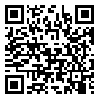Volume 11, Issue 1 (6-2018)
ijhe 2018, 11(1): 85-96 |
Back to browse issues page
Download citation:
BibTeX | RIS | EndNote | Medlars | ProCite | Reference Manager | RefWorks
Send citation to:



BibTeX | RIS | EndNote | Medlars | ProCite | Reference Manager | RefWorks
Send citation to:
Rafiee R, Moeinaddini M, Khorasani N. Uncertainty analysis of a mass balance model to estimate the rate of aerobic processes in municipal solid waste landfills. ijhe 2018; 11 (1) :85-96
URL: http://ijhe.tums.ac.ir/article-1-5943-en.html
URL: http://ijhe.tums.ac.ir/article-1-5943-en.html
1- Department of Environmental Sciences, Faculty of Natural Resources, University of Tehran, Karaj, Iran , rrafiee@ut.ac.ir
2- Department of Environmental Sciences, Faculty of Natural Resources, University of Tehran, Karaj, Iran
2- Department of Environmental Sciences, Faculty of Natural Resources, University of Tehran, Karaj, Iran
Abstract: (3709 Views)
Background and Objective: The aim of this study was to assess the sensitivity and uncertainty analysis of a mass balance model to estimate the rate of aerobic processes in a landfill.
Materials and Methods: Monte Carlo simulation is a common method to evaluate uncertainty of the results of a model. Here, we used a Monte Carlo (MC) simulation. The data obtained from the experiments were used as a baseline. Considering a uniform Probability Distribution Function (PDF) within ±15% deviation, samples were taken from the baseline data. Using randomly selected inputs, model was executed for 1000 iterations and outputs were evaluated. Then, the total Sobol index for each input parameter was determined. The uncertainty of each output was presented by standard error and means observed in MC simulation.
Materials and Methods: Monte Carlo simulation is a common method to evaluate uncertainty of the results of a model. Here, we used a Monte Carlo (MC) simulation. The data obtained from the experiments were used as a baseline. Considering a uniform Probability Distribution Function (PDF) within ±15% deviation, samples were taken from the baseline data. Using randomly selected inputs, model was executed for 1000 iterations and outputs were evaluated. Then, the total Sobol index for each input parameter was determined. The uncertainty of each output was presented by standard error and means observed in MC simulation.
Results: The results of this study revealed that while the uncertainty for the rate of composting process was mainly originated from the measured value of CO2 flux, the evaluated value for the rate of anaerobic digestion process was highly influenced by the value measured for CH4 emission flux. All inputs contributed equally to the uncertainty in the evaluated values for the rate of methane oxidation process. Although a variability of 15% was assumed for the model inputs, the mean value for the outputs from Monto Carlo simulations were close to those obtained by using base values that were in most cases within ±10% limit.
Conclusion: The majority of the uncertainty in the outputs came from the variability in the measurement of the flux of CH4 and CO2. The error in these parameters, however, can be minimized by increasing frequency and replicates of gas samples as these parameters are measured directly for each location.
Type of Study: Research |
Subject:
General
Received: 2017/09/3 | Accepted: 2018/05/19 | Published: 2018/07/17
Received: 2017/09/3 | Accepted: 2018/05/19 | Published: 2018/07/17
Send email to the article author
| Rights and Permissions | |
 |
This work is licensed under a Creative Commons Attribution-NonCommercial 4.0 International License. |





